Русь, Византия и Западная Европа: Из истории внешнеполитических и культурных связей XII—XIII вв. - [274]
The creating of the Galich Aprakos Gospel of the beginning of the 13th c. (now in the State Tretyakov Gallery in Moscow) is also connected with Euphrosine of Galich. The miniatures and ornaments illuminating the manuscript are considered to be some of the best examples of the Russian artistic bookwork.
The influence of great princess Euphrosine explains the appearance of unusual and unique Christian names among the Galich and Volynian Rurikides. First of all it is the name «Daniel», which was adopted by the Moscow princes afterwards. This name became in use thanks to the spreading of the cult of Daniel Stylites and rising of the interest in the attributes of stylites which can be seen in sigillography and in the numerous architectural monuments of Galich and Volyn of the 13th — beginning of the 14th c. as well. Thanks to the family links of the Galich and Volyn princes and their Vladimir Suzdalsky this cult spread in the North- East of Rus' and then in Moscow.
Euphrosine being the daughter of Isaac II the interest in the stylites increased among the princes. According to Niceta Choniate emperor Isaac showed hot love and especially protected the stylites and the hermits astonishing the contemporaries, because since the times of iconoclasm stylites lost their previous influence on the emperors and their movement declined.
Byzantine hagiographical tradition on St. Daniel Stylites and emperor Leo the Great explains the connection of the names Daniel and Lev (Leo) among the descendants of Roman Mstislavich and Euphrosine. Daniel Stylites was the spiritual father and the main councilor of emperor Leo I. It seems as if this circumstance reflected in the pair of names of the Galich princes: father and son — Daniel Romanovich and Lev Daniilovich.
The name of prince Iraclii (Hercules) Daniilovich is connected with cult of the Holy Cross. Though the Byzantine emperor Hercules I who returned the main Christian relic the Holy Cross from the Persian captivity hadn't been canonized by the Chuch his memory was worshiped both in the East and in the West. The special interest in Hercules marked the Crusade epoch in Europe, when his name became the symbol of liberating and the defense of Holy Land and thus impressed in numerous monuments of art and literature and in the names of Patriarchs of Jerusalem also.
Together with the untypical for the Rurikides «Byzantine» names of the Galich princes the political and cultural inheritance of Roman Mstislavich displayed in some attributes and symbols of the imperial power. First of all it is the double-headed eagle known from the descriptions of the monumental sculptures and the information about the territorial symbols of Galich and Volynian Rus'. Depicting the appearance of Daniel the chronicler witnesses the unusual case of bearing «Greek olovir». This special term meant «real» or «imperial» purple.
The external attributes of the imperial dignity corresponded to the imperial title of the Princes of Galich and Volyn. Using the title «tsar» and «autorcator» and the derivates towards the princes of Galich and Volyn is seen in the numerous literary sources all the 13th c. along. The features of the Byzantine emperor are evidently shown in the political activity of Roman Mstislavich and his descendants. First of all it is seen in their attempts to enlarge their powers according to the idea of the imperial (that of Basileus) power, in their claims of the investments of the bishops, in their choice of the instruments of the political struggle.
To begin with Roman Mstislavich the princes of Galich and Volyn took permanent care of giving their power sacral air through gathering highly worshiped Christian relics. Byzantine emperors conducting such a policy for many centuries collected almost all known relics of the Christian East in Constantinople. The Byzantine capital having been plundered many European monarchs thought about «translatio imperii» (the translation of the Empire) through acquisition and translating the Constantinople relics to their capitals. The Moscow Great Princes and the Tsars continued this practice for centuries afterwards.
The seizure of Constantinople by the crusaders was reflected in «the Tale of capture of Tsar-grad by the Franks». Dobrynya Yadreycovich, boyarin of Novgorod and the future archbishop of Novgorod, is thought to be the most probable author of the text. Closely connected with Roman Mstislavich, the prince of Galich and Volyn, Dobryanya was sent by him to Constantinople, where he spent several years and saw the devastation of the Byzantine capital in April, 1204. It was the tense connection with the prince of Galich and Volyn that appeared in Dobryanya's attention to the prince's in-law, the German king Philip the Schwab, who had played a role in the organization of the Fourth Crusade. Dobrynya could have been informed by one of the king's partisans archbishop of Salzburg Conrad von Krosig who took part in the siege of Constantinople in 1203–1204.
The Byzantine heritage of Roman Mstislavich and «great princess» Euphrosine-Ann displayed in their sons' and grand-sons' foreign policy. It appeared first of all in the struggle for Austria led by Daniel Romanovich and his son Roman's attempt to seize the throne of the dukes of Austria in 1252–1253. The princes of Galich and Volyn were among the main claimants to the «Austrian heritage» thanks to their relationship with the Babenbergs by the distaff side: Euphrosine was a cousin of Duchess of Austria Theodora Angelina, and the childless Duke Frederick II the Quarrelsome was the cousin of Daniel.
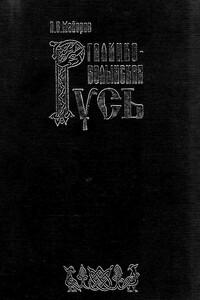
В монографии на основе широкого круга русских и иностранных источников рассматривается социально-политическая история Галицко-Волынской Руси XI–XIII вв. Изучаются процессы формирования городских общин Галичины и Волыни, их борьба за независимость от Киева, особенности политического развития, межобщинные противоречия и конфликты. Значительное внимание уделяется социально-политической роли бояр, раскрывающейся во взаимоотношениях с княжеской властью и рядовыми гражданами, формированию и деятельности боярской думы, ее месту в системе государственных институтов.
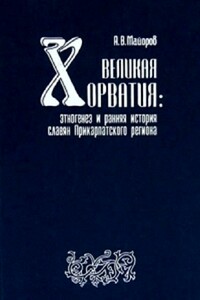
В монографии проводится комплексный анализ известий византийского императора Константина VII Багрянородного и других письменных источников о происхождении и расселении хорватских племен, этнической истории славянского населения Прикарпатского региона. С учетом новейших археологических и лингвистических данных решаются вопросы происхождения этнонима «хорваты», исторических условий славянизации его первоначальных носителей, хорватской прародины. Устанавливается географическое положение Великой Хорватии, территориальная локализация белых хорватов, пути хорватской миграции в раннем средневековье.
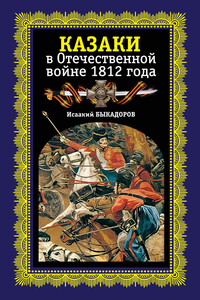
Отечественная война 1812 года – одна из самых славных страниц в истории Донского казачества. Вклад казаков в победу над Наполеоном трудно переоценить. По признанию М.И. Кутузова, их подвиги «были главнейшею причиною к истреблению неприятеля». Казачьи полки отличились в первых же арьергардных боях, прикрывая отступление русской армии. Фланговый рейд атамана Платова помешал Бонапарту ввести в бой гвардию, что в конечном счете предопределило исход Бородинского сражения. Летучие казачьи отряды наводили ужас на французов во время их бегства из Москвы.
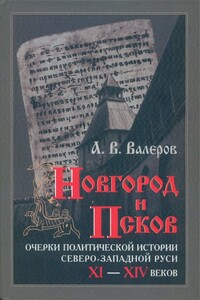
В монографии освещаются ключевые моменты социально-политического развития Пскова XI–XIV вв. в контексте его взаимоотношений с Новгородской республикой. В первой части исследования автор рассматривает историю псковского летописания и реконструирует начальный псковский свод 50-х годов XIV в., в во второй и третьей частях на основании изученной источниковой базы анализирует социально-политические процессы в средневековом Пскове. По многим спорным и малоизученным вопросам Северо-Западной Руси предложена оригинальная трактовка фактов и событий.
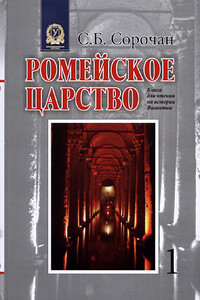
Книга для чтения стройно, в меру детально, увлекательно освещает историю возникновения, развития, расцвета и падения Ромейского царства — Византийской империи, историю византийской Церкви, культуры и искусства, экономику, повседневную жизнь и менталитет византийцев. Разделы первых двух частей книги сопровождаются заданиями для самостоятельной работы, самообучения и подборкой письменных источников, позволяющих читателям изучать факты и развивать навыки самостоятельного критического осмысления прочитанного.
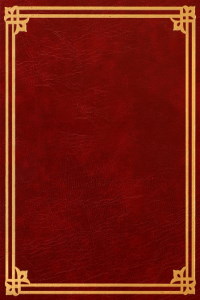
"Предлагаемый вниманию читателей очерк имеет целью представить в связной форме свод важнейших данных по истории Крыма в последовательности событий от того далекого начала, с какого идут исторические свидетельства о жизни этой части нашего великого отечества. Свет истории озарил этот край на целое тысячелетие раньше, чем забрезжили его первые лучи для древнейших центров нашей государственности. Связь Крыма с античным миром и великой эллинской культурой составляет особенную прелесть истории этой земли и своим последствием имеет нахождение в его почве неисчерпаемых археологических богатств, разработка которых является важной задачей русской науки.
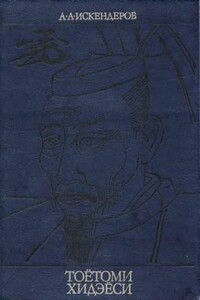
Автор монографии — член-корреспондент АН СССР, заслуженный деятель науки РСФСР. В книге рассказывается о главных событиях и фактах японской истории второй половины XVI века, имевших значение переломных для этой страны. Автор прослеживает основные этапы жизни и деятельности правителя и выдающегося полководца средневековой Японии Тоётоми Хидэёси, анализирует сложный и противоречивый характер этой незаурядной личности, его взаимоотношения с окружающими, причины его побед и поражений. Книга повествует о феодальных войнах и народных движениях, рисует политические портреты крупнейших исторических личностей той эпохи, описывает нравы и обычаи японцев того времени.

В книге рассказывается история главного героя, который сталкивается с различными проблемами и препятствиями на протяжении всего своего путешествия. По пути он встречает множество второстепенных персонажей, которые играют важные роли в истории. Благодаря опыту главного героя книга исследует такие темы, как любовь, потеря, надежда и стойкость. По мере того, как главный герой преодолевает свои трудности, он усваивает ценные уроки жизни и растет как личность.